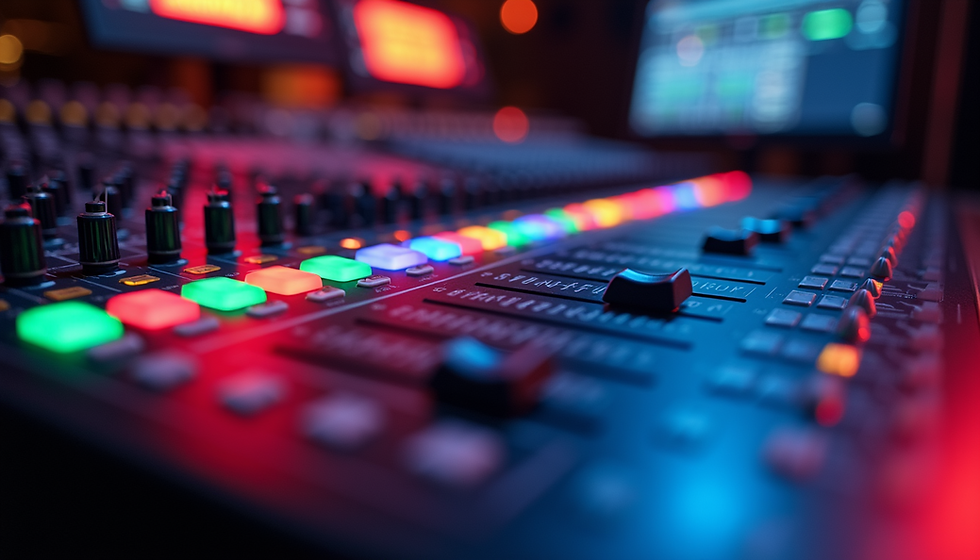Jazz: The Eternal Pulse of Improvisation
- Sasha Bennett

- Sep 13
- 3 min read
Roots in New Orleans: The Birth of a Sound
At the dawn of the 20th century, in the streets and clubs of New Orleans, jazz emerged as a cultural fusion unlike anything before it. Born out of African American spirituals, blues traditions, and ragtime, jazz quickly became the heartbeat of a city that thrived on cultural intersections. Brass bands, syncopated rhythms, and the improvisational genius of early musicians like Buddy Bolden and Jelly Roll Morton turned jazz into not just music, but a form of storytelling. By the 1920s, jazz had taken its first steps out of New Orleans and into the wider world, riding the energy of the Harlem Renaissance and becoming known as "America’s classical music."

Swing, Bebop, and the Expansion of Jazz
As jazz matured, it expanded into diverse directions. The 1930s brought swing, where big bands led by Duke Ellington, Count Basie, and Benny Goodman turned jazz into the soundtrack of dance halls across the country. Swing emphasized ensemble precision but never lost the improvisational spark that defined jazz at its core.
By the 1940s, however, artists like Charlie Parker, Dizzy Gillespie, and Thelonious Monk sought a deeper, more complex approach. Bebop was born: a fast-paced, harmonically intricate style that shifted jazz from popular dance music into high art. Bebop demanded active listening and technical brilliance, cementing jazz as a genre that valued risk-taking, individuality, and virtuosity.
Cool Jazz, Modal Jazz, and Fusion
In the 1950s and 60s, new shades of jazz appeared. Miles Davis pioneered cool jazz with its laid-back, atmospheric feel, then pushed boundaries again with modal jazz, particularly on his landmark album Kind of Blue. John Coltrane expanded these ideas, exploring spirituality and intensity in works like A Love Supreme. Jazz became a space for both meditative subtlety and explosive experimentation.
The 1970s ushered in fusion, where jazz musicians like Herbie Hancock, Weather Report, and Mahavishnu Orchestra blended improvisation with rock, funk, and later electronic elements. Fusion marked a turning point: jazz was no longer confined to one tradition, but an endlessly adaptable form.
Jazz in the Modern Era: Reinvention and Crossovers
In 2025, jazz is not a relic of the past but a force that continues to evolve. Neo-soul, hip-hop, and electronic music all carry jazz DNA, often woven directly into the production. Artists like Robert Glasper, Kamasi Washington, Esperanza Spalding, and Terrace Martin are redefining what jazz looks like in the 21st century—fluid, genre-crossing, and socially conscious.
In London, collectives like Ezra Collective and Kokoroko are fueling a jazz renaissance that blends Afrobeat, Caribbean rhythms, and contemporary club energy. Meanwhile, in the U.S., younger artists such as Immanuel Wilkins, Joel Ross, and Nubya Garcia are proving that jazz is not only alive but thriving, speaking directly to a new generation of listeners.
Why Jazz Still Matters in 2025
Jazz endures because it is rooted in improvisation—a reflection of freedom, adaptation, and individuality. At its core, jazz is about listening and responding, about dialogue as much as performance. That ethos makes it as relevant today as it was a century ago. In an age where collaboration and cultural blending define much of the music landscape, jazz feels less like a niche genre and more like a connective tissue linking multiple styles.
Listening Recommendations: Classic and Contemporary
For those diving into jazz, balance is key: embrace both the legends and the new innovators.
Classic: Miles Davis – Kind of Blue (1959)
Classic: John Coltrane – A Love Supreme (1965)
Modern: Kamasi Washington – The Epic (2015)
Modern: Ezra Collective – Where I’m Meant to Be (2022)
Modern: Robert Glasper – Black Radio III (2022)
Closing Thoughts: The Pulse That Never Fades
Jazz is not about nostalgia. It’s about possibility. It’s the art of creation in real time, and its influence can be heard everywhere from streaming-era R&B to boundary-pushing electronic experiments. As we listen in 2025, jazz is less a museum piece and more a mirror held up to our cultural moment. It continues to teach us that music, like life, is richest when it flows, adapts, and dares to take risks.
At STUDIO814, we believe in amplifying voices, celebrating creativity, and connecting music lovers with the artists who inspire them. Stay tuned to our blog for more stories, spotlights, and insights from the ever-evolving world of music.




Comments